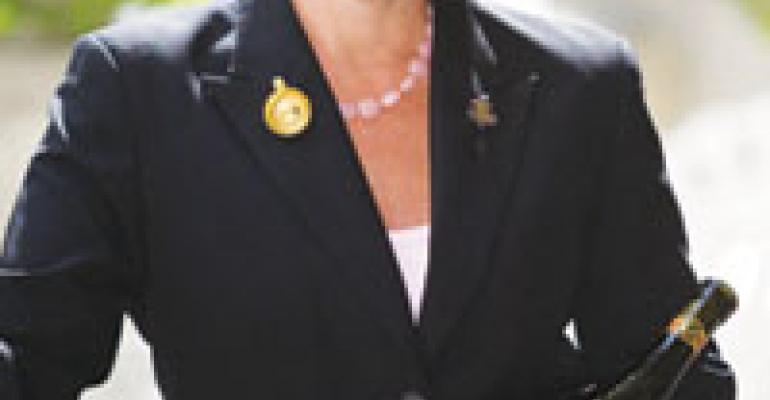It’s a common experience: Customers fall in love with a wine at their favorite restaurant but can’t locate a place to buy that same bottle to drink at home.
But some wine-savvy restaurants, recognizing that customer loyalty is sometimes built drink by drink, are providing wines they feature on their menus for retail purchase.
It’s not always easy. State laws may prohibit or make very difficult dual retail-restaurant licensing. Also, many winemakers prefer to build cachet by limiting their wares to fine-dining restaurants.
But others are willing to take the extra steps to make it happen. At The Bernards Inn in Bernardsville, N.J., for example, customers who select from the 1,500 or so wines that sommelier Terri Baldwin assembles are tickled when they find they can bring most of them home.
“We offer these wines with the intent to build relationships with our customers, so that they can get something unique and different,” Baldwin says. “We don’t want to sell a wine they can get at a retail store, but we are looking to sell people wines they can’t find that might be small production but not necessarily expensive.”
The restaurant doesn’t advertise its retail program, and Baldwin is careful not to upset winemakers who want their wine sold only at the table. But offering those she features on the restaurant’s tasting menu is a perfect example of the loyalty-building concept.
“We’re not a retail store and don’t want to be,” she says, “so we focus it as a benefit to our customer—almost a ‘thank you’ for patronizing our restaurant.”
In states where restaurants can also sell at retail, it’s a no-brainer for wine-focused places to provide the service, says Dan Kezner, director of restaurant operations for Seattle-area Heavy Restaurant Group. At the group’s three Purple Café units, nearly all the wines served are available for take-out.
“It just makes sense, especially in our concept, a wine bar with 80 to 90 bottles available by the glass,” he says. “It was a natural fit for people to shop for retail wines by being able to taste them before they buy them. People can spend a half hour trying our wine and get some guidance on what they want to actually take home.”
Location is important, too. At the down-town Seattle Purple Café unit, office workers looking to do their wine shopping at lunch or hotel guests wanting to improve upon the in-room selection drive up retail business, compared to the two suburban units. But overall, the program is more of a loss leader than a profit center for Purple Café. Because liquor and grocery stores and even discount clubs sell alcohol, the region doesn’t lack for outlets. Still, with Purple Café’s retail prices 30 to 40 percent lower than menu prices, they are very competitive.
But does revealing different retail and restaurant prices give customers pause at the mark-up restaurants typically charge?
“I think most people understand the difference between dining in a restaurant and taking a wine home and realize why they pay more in a restaurant,” Kezner says.
Kezner also points out that with so many restaurants proclaiming their wine-friendliness today, places like his should be developing better relationships with customers through introducing them to good buys and unfamiliar regions.
The Bernards Inn’s Baldwin says that when she knows she’s cornered the New Jersey market on a wonderful yet obscure wine, sharing the secret with a customer is even more rewarding, especially if they pick up a few bottles to share with friends.
It’s a classic way to form a lasting relationship, which after all, is the ultimate goal of a restaurant-retail wine program.





